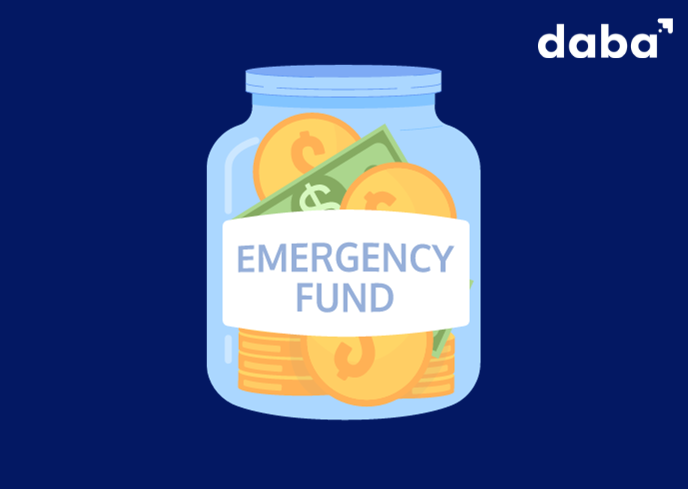What is an emergency fund?
3 min Read November 4, 2023 at 4:56 PM UTC

In life, unexpected expenses can arise at any moment, whether it’s a medical emergency, car repair, or sudden job loss. That’s where having an emergency fund comes in handy.
An emergency fund acts as a financial safety net, providing you with peace of mind and protecting you from falling into debt when unforeseen circumstances occur.
In this blog, we will explore the concept of emergency funds and how they work in real life.
Also Read: How to manage your finances on low income
Understanding emergency funds
Imagine you’re driving down the road, and suddenly, your car breaks down. Without an emergency fund, you’d be stuck in a difficult situation, struggling to pay for the repairs.
An emergency fund is a pool of money set aside specifically for unforeseen expenses, providing you with a financial cushion when you need it the most.
Why should you have an emergency fund?
Let’s say you receive an unexpected medical bill. Without an emergency fund, you might be forced to put the expense on a credit card, resulting in high-interest debt that accumulates over time.
However, if you have an emergency fund, you can cover the medical bill without relying on credit and avoid falling into a financial hole.
How much should you save?
Determining the right amount for your emergency fund depends on your circumstances.
As a general guideline, aim to save three to six months’ worth of living expenses.
Consider your monthly bills, such as rent/mortgage, utilities, groceries, and transportation, to estimate how much you need to cover your basic needs for a few months in case of an emergency.
Also Read: How to break free from bad money habits
Setting savings goals
Let’s say you calculate your monthly expenses to be $2,000. To build a six-month emergency fund, you would aim to save $12,000.
Breaking it down, you can set smaller, achievable goals, such as saving $1,000 per month or $250 per week. This approach makes the task less daunting and more manageable.
Building your emergency fund
There are different strategies you can employ to save money for your emergency fund. Some common approaches include:
a. Automating Savings: Set up an automatic transfer from your checking account to a separate savings account each month. Treating your emergency fund as a bill ensures consistent contributions and helps you avoid the temptation to spend the money elsewhere.
b. Cutting Back on Expenses: Review your monthly spending and identify areas where you can reduce costs. For example, eating out less frequently or canceling unused subscriptions can free up extra funds for your emergency savings.
c. Increasing Income: Consider finding ways to supplement your regular income. This could include taking up a side gig, freelancing, or selling unused items. The additional income can accelerate your emergency fund growth.
Keeping your emergency fund safe and accessible
It’s important to keep your emergency fund separate from your regular spending accounts.
Consider opening a dedicated savings account or a high-yield savings account, which may offer a higher interest rate.
This separation ensures that you don’t accidentally dip into your emergency fund for non-essential expenses.
Also Read: What are stocks and why invest in them?
Replenishing the fund
Remember to replenish your emergency fund after using it for unexpected expenses.
Treat it as a priority and aim to rebuild your fund as soon as possible to ensure you have sufficient protection in case another emergency arises.
Getting it right
An emergency fund serves as a financial safety net, providing stability and peace of mind when unexpected expenses occur.
By setting achievable savings goals, employing smart saving strategies, and making your emergency fund a priority, you can build a strong foundation for your financial well-being.
Start small and stay consistent, and over time, your emergency fund will grow.
This material has been presented for informational and educational purposes only. The views expressed in the articles above are generalized and may not be appropriate for all investors. The information contained in this article should not be construed as, and may not be used in connection with, an offer to sell, or a solicitation of an offer to buy or hold, an interest in any security or investment product. There is no guarantee that past performance will recur or result in a positive outcome. Carefully consider your financial situation, including investment objective, time horizon, risk tolerance, and fees prior to making any investment decisions. No level of diversification or asset allocation can ensure profits or guarantee against losses. Articles do not reflect the views of DABA ADVISORS LLC and do not provide investment advice to Daba’s clients. Daba is not engaged in rendering tax, legal or accounting advice. Please consult a qualified professional for this type of service.

Next Frontier
Stay up to date on major news and events in African markets. Delivered weekly.
Pulse54
UDeep-dives into what’s old and new in Africa’s investment landscape. Delivered twice monthly.
Events
Sign up to stay informed about our regular webinars, product launches, and exhibitions.

